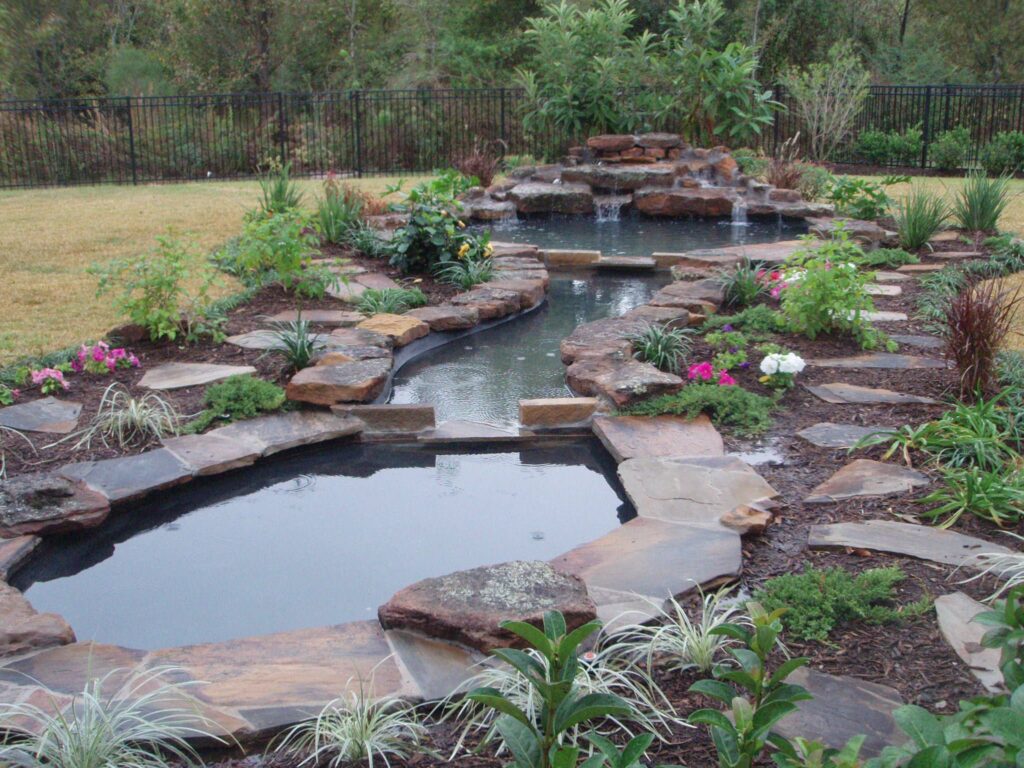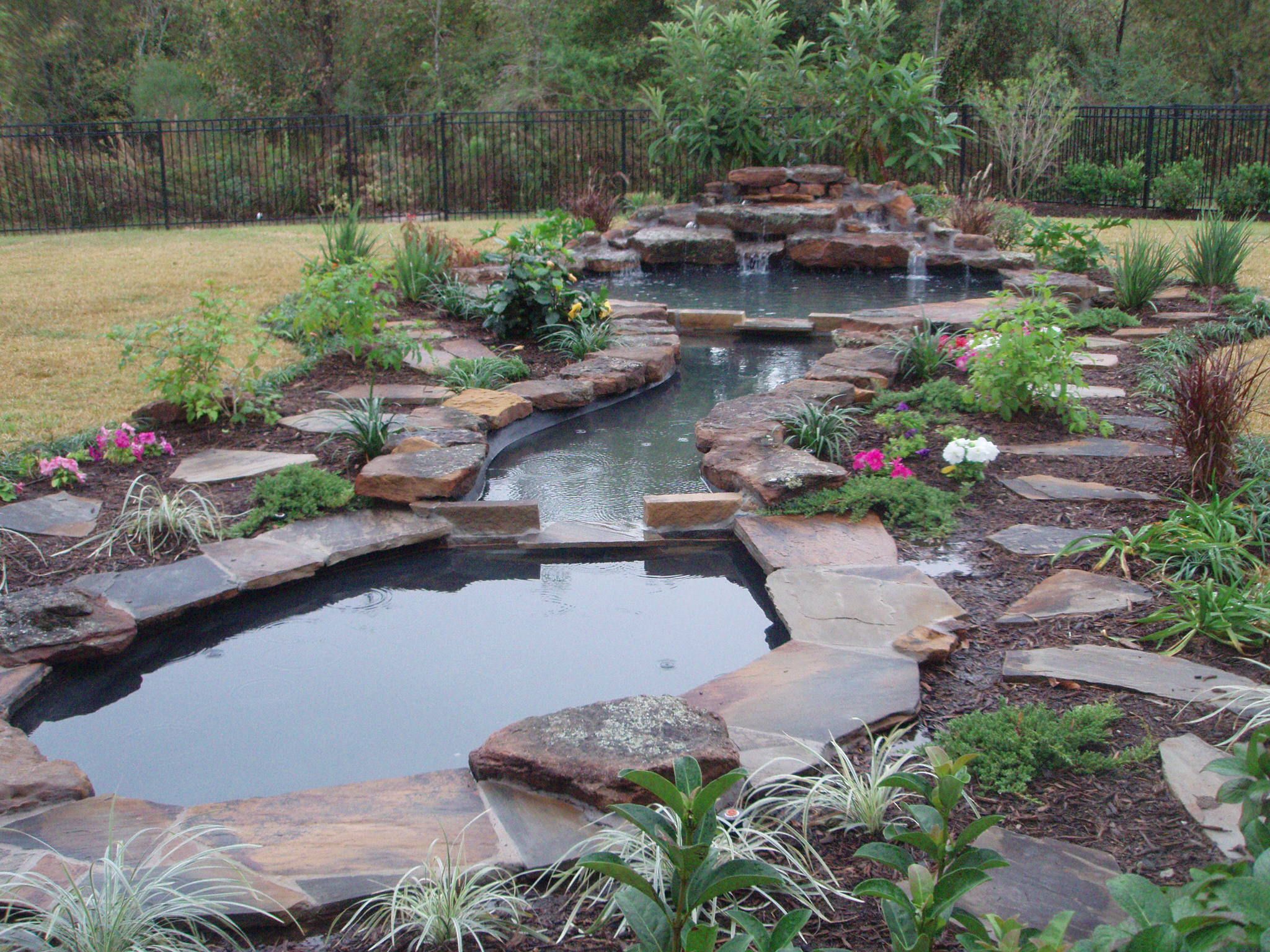
Transform Your Backyard with a Stunning Pond Landscape
Creating a beautiful and functional pond landscape is an achievable dream for many homeowners. Beyond mere aesthetics, a well-designed pond landscape can transform your backyard into a tranquil oasis, enhancing property value and providing a habitat for local wildlife. This comprehensive guide will explore the key aspects of designing, building, and maintaining a thriving pond landscape.
Planning Your Pond Landscape
Before you even break ground, careful planning is essential. Consider the following factors:
- Location: Choose a location that receives a mix of sunlight and shade. Too much sun can lead to excessive algae growth, while too much shade can hinder the growth of aquatic plants. Also, consider proximity to trees; falling leaves can contribute to organic buildup in the pond.
- Size and Depth: The size of your pond landscape should be proportional to your yard. Consider the depth as well, especially if you plan to keep fish. A deeper pond will be less susceptible to temperature fluctuations.
- Permits and Regulations: Check with your local authorities to determine if any permits are required for building a pond on your property.
- Budget: Establish a realistic budget that includes the cost of materials, labor (if you’re hiring professionals), and ongoing maintenance.
Designing Your Pond Landscape
The design of your pond landscape should reflect your personal style and complement your existing landscaping. Here are some design considerations:
Pond Shape and Edging
Consider the shape of your pond. Natural, irregular shapes tend to blend more seamlessly with the surrounding environment. For edging, you can use natural stone, gravel, or even specialized pond liners. The goal is to create a natural-looking transition between the pond and the surrounding landscape.
Water Features
Water features such as waterfalls, fountains, and streams can add visual interest and auditory appeal to your pond landscape. Waterfalls also help to oxygenate the water, which is beneficial for fish and other aquatic life.
Plant Selection
Carefully select plants that are appropriate for your climate and the specific conditions of your pond. Consider a mix of submerged, floating, and marginal plants. Submerged plants help to oxygenate the water, while floating plants provide shade and shelter for fish. Marginal plants, which grow along the edges of the pond, help to soften the transition between the water and the land. Consider native plants whenever possible to support local ecosystems. [See also: Native Aquatic Plants for Pond Landscapes]
Rock Placement
Rocks can be used to create natural-looking features around your pond landscape. Use different sizes and shapes of rocks to add visual interest. Be sure to secure the rocks properly to prevent them from falling into the pond. Flat rocks placed near the water’s edge can provide basking spots for frogs and other amphibians.
Building Your Pond Landscape
Once you have a plan and a design, it’s time to start building your pond landscape. You have two main options: DIY or hiring a professional contractor.
DIY Pond Construction
Building a pond yourself can be a rewarding experience, but it requires time, effort, and some basic construction skills. Here are the basic steps involved:
- Excavation: Dig the hole for your pond according to your design. Make sure the sides are sloped to prevent erosion.
- Liner Installation: Install a pond liner to prevent water from seeping into the ground. Choose a high-quality liner that is resistant to punctures and UV damage.
- Edging: Install the edging around the pond to create a finished look.
- Water Feature Installation: Install any water features, such as waterfalls or fountains.
- Planting: Plant your aquatic plants according to your design.
- Filling: Fill the pond with water.
Hiring a Professional Contractor
If you’re not comfortable building a pond yourself, consider hiring a professional contractor. A contractor can handle all aspects of the project, from design and excavation to liner installation and planting. Be sure to get multiple quotes and check references before hiring a contractor. [See also: Finding the Right Pond Contractor]
Maintaining Your Pond Landscape
Once your pond landscape is complete, it’s important to maintain it properly to keep it healthy and beautiful. Here are some maintenance tips:
Water Quality
Regularly test the water quality to ensure that it is within acceptable ranges. You may need to add chemicals to adjust the pH or alkalinity of the water. A healthy pond landscape requires a balance. Consider installing a filtration system to remove debris and excess nutrients from the water.
Algae Control
Algae growth is a common problem in ponds. To control algae, you can use algaecides, barley straw, or beneficial bacteria. You can also try to reduce the amount of sunlight that reaches the pond by planting shade trees or using floating plants.
Debris Removal
Regularly remove leaves, twigs, and other debris from the pond. This will help to prevent the buildup of organic matter, which can lead to poor water quality.
Fish Care
If you have fish in your pond, be sure to feed them regularly and monitor their health. Overfeeding can lead to water quality problems. Also, be aware of predators, such as herons and raccoons, and take steps to protect your fish. A vibrant pond landscape is a happy pond landscape.
Winterizing
In colder climates, you will need to winterize your pond to protect it from freezing. This may involve removing plants, draining the pond, or using a pond heater to keep the water from freezing solid. Proper winterization ensures your pond landscape survives the cold months. A well-maintained pond landscape is a testament to your commitment.
Benefits of a Pond Landscape
Investing in a pond landscape offers numerous benefits:
- Enhanced Aesthetics: A pond can add beauty and tranquility to your backyard, creating a relaxing and inviting space.
- Increased Property Value: A well-designed pond landscape can increase the value of your property.
- Wildlife Habitat: A pond can provide a habitat for a variety of wildlife, including fish, frogs, turtles, and birds.
- Stress Relief: The sound of running water and the sight of aquatic life can be incredibly relaxing and stress-relieving.
- Educational Opportunity: A pond can be a great educational tool for children, teaching them about nature and the environment.
Common Mistakes to Avoid
Creating a successful pond landscape involves avoiding common pitfalls:
- Inadequate Planning: Failing to plan properly can lead to costly mistakes and a less-than-satisfactory result.
- Poor Water Quality: Neglecting water quality can lead to algae blooms, fish kills, and an unsightly pond.
- Improper Plant Selection: Choosing the wrong plants can lead to poor growth, invasive species, and an unbalanced ecosystem.
- Insufficient Maintenance: Failing to maintain the pond properly can lead to a buildup of debris, poor water quality, and other problems.
- Ignoring Local Regulations: Not checking local regulations can lead to fines or the need to remove your pond.
Conclusion
A pond landscape can be a stunning addition to any backyard, providing beauty, tranquility, and a host of other benefits. By carefully planning, designing, building, and maintaining your pond, you can create a thriving ecosystem that will bring you joy for years to come. Remember to research local regulations, choose appropriate plants and fish, and prioritize water quality. A well-executed pond landscape is more than just a water feature; it’s an investment in your property and your well-being. So, start planning your dream pond landscape today and transform your backyard into a haven of natural beauty.

